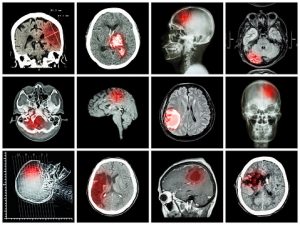
We talked about causes, symptoms, and treatment for lacunar stroke, examined how silent stroke is causing vascular dementia, looked at the benefits of yoga for kidney health and how blood clots can form in the brain.
Lacunar infarct, a type of stroke: Causes, symptoms, and treatment options
Lacunar infarct is a type of stroke that occurs when one of the arteries supplying blood to the brain gets blocked. These arteries are quite small, which makes them vulnerable to damage. While most arteries in the body gradually become smaller, the arteries of the lacunar stroke branch off a large high-pressure artery.
Lacunar stroke is a type of ischemic stroke that occurs within the deepest structures of the brain. Experiencing a lacunar stroke increases your risk of future strokes. In order to reduce damage and future complications, it’s important that lacunar stroke is detected right away so treatment can begin early on. Continue reading…


Although it may not be a common term, silent stroke is a leading cause of vascular dementia that impacts about one-third of those over the age of 70. A better understanding of silent stroke can help many people reduce the risk of memory problems associated with vascular dementia.
During a typical stroke, a clot blocks a blood vessel that feeds part of the brain. Brain cells then can die, leading to facial weakness, trouble speaking, difficulty walking, or even vision problems. So what is a silent stroke then? Well, when someone has a silent stroke, blood flow is interrupted and cells in an area of the brain that don’t control vital functions get destroyed. This damage can show up on an MRI or CT scan, but is often too small to produce obvious symptoms. Still, a silent stroke can cause cognitive impairment. Continue reading…


Yoga can be beneficial in promoting kidney health. The main role of the kidneys is to help filter waste from the body, along with secreting necessary hormones and stabilizing blood pressure. The kidneys also help maintain homeostasis which goes to show how important the kidneys really are for the healthy functioning of the entire body, not just the urinary system.
Although modern medicine has come a long way in improving treatment for kidney diseases, there are natural remedies that can offer relief, too. Case in point, yoga can be an effective approach to the risk of kidney stones and improving kidney function.
Yoga promotes overall well-being and a healthy lifestyle. It is a safe mode of treatment for kidney disease patients because it is not associated with any adverse side effects. Continue reading…
All of us have clotting factors in our body to make sure that we don’t bleed to death if we cut ourselves, but under certain circumstances people can experience blood clots in the brain and that can be life-threatening.
A blood clot forms in an attempt to repair some sort of damage to a blood vessel. It is a gel-like mass that is formed by platelets and fibrin (a protein involved in blood clotting) to help stop bleeding. When blood clots form the wrong way inside an artery or vein, it can cause serious problems. People who smoke, take birth control pills, and are sedentary are at a higher risk of getting blood clots. Continue reading…
In arthritis patients, even moderate physical activity can improve function in the arthritic limb. It is recommended that American adults partake in 150 minutes of physical activity a week, but unfortunately only one in 10 older adults with knee arthritis meet this goal. This prompted the researchers to set an easier-to-achieve target to make sure these arthritic patients can still improve their mobility. The new target time is 45 minutes a week.
The researchers found that nearly one-third of patients improved or had high function after two years. Those who clocked in at least 45 minutes of moderate exercise were 80 percent more likely to maintain high function after two years, compared to those who had less exercise. Continue reading…